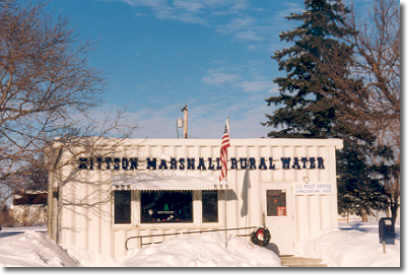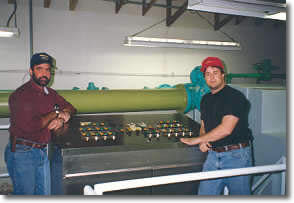Drinking Water Protection
- Drinking Water Protection Home
- About Us
- A-Z Index of Contaminants in Water
- Community Public Water Supply
- Drinking Water Grants and Loans
- Drinking Water Institute
- Drinking Water in Schools and Child Cares
- Drinking Water Revolving Fund
- Laws and Rules
- Noncommunity Public Water Supply
- Source Water Protection
- Water Operator and Certification Training
- Drinking Water Protection Contacts
Related Topics
- Annual Reports
- Drinking Water Risk Communication Toolkit
- Drinking Water Protection External Resources
- Fact Sheets
- Forms
- Invisible Heroes Videos: Minnesota's Drinking Water Providers
- Noncom Notes Newsletter
- Sample Collection Procedures (videos, pictures, written instructions)
- Waterline Newsletter
Related Sites
- 10 States Standards
- Clean Water Fund
- Health Risk Assessment – Guidance Values and Standards for Water
- Minnesota Well Index
- Water and Health
- Wells and Borings
Environmental Health Division
Meeting the Need with Rural Water
Systems Play a Major Role in Getting Water Where It’s Needed
From the Summer 1996 Waterline
Quarterly Newsletter of the Minnesota Department of Health Public Water Supply Unit, Waterline
A complete list of feature stories can be found on the Waterline webpage.
 A previous issue of the Waterline contained a story about the challenges of finding potable water in Southwestern Minnesota, one of the few areas in the state that is not abundant in groundwater. Portions of the northwestern corner of Minnesota also share this trait and are relying more and more on rural water systems to replace the meager supplies that are often limiting economic expansion in some of their cities.
A previous issue of the Waterline contained a story about the challenges of finding potable water in Southwestern Minnesota, one of the few areas in the state that is not abundant in groundwater. Portions of the northwestern corner of Minnesota also share this trait and are relying more and more on rural water systems to replace the meager supplies that are often limiting economic expansion in some of their cities.
As they do in other areas, the geologic history and physical properties define water characteristics of this region. The extreme western regions of Northern Minnesota are topographically flat with soils that are heavy in clay and that drain poorly. The topography and underlying drift are related to the last glacial period, which retreated from the state approximately 10,000 years ago. Minnesota’s most prominent glacial lake was Lake Agassiz, which was larger than all today’s Great Lakes combined. Lake Agassiz occupied the northwest portion of Minnesota (completely encompassing what is now Kittson County), extending into the Dakotas and Canada providing settling points for silt and clay, which impede the movement of groundwater.
Long before this, salt-water bodies invaded the region and left a sheet of marine sediments, including sandstones, shales, and limestones. A period of erosion followed the withdrawal of the ancient seas, but during the Cretaceous period the area was occupied by another sea that left sediments tilted gently toward the west. Near the Red River, which serves as the boundary between North Dakota and Minnesota, the presence of the Cretaceous beds is still evident by the saltiness of the water derived from them.
Larry Cole, the MDH Engineer for Northwest Minnesota, explains why water supply adjacent to the Red River is so challenging. “There are two factors involved: the shallow soils that are heavy in clay and fertile-making the Red River Valley the breadbasket of the world-but aren’t the sort of thing to develop a water supply in. And the deep soils have the old sea-bed water in them. The upper soils don’t yield water; the lower soils are salty.
“This is the reason for the need for rural water systems.”
The rural water systems in this area get their water supply either from the sand ridges of the glacial Lake Agassiz or from the more-plentiful aquifers that lie east of the Red River Valley basin. The wells are often deeper than most of the private wells in that area and are more reliable both in terms of continuous supply and safety.
Rural water systems were first introduced in the United States in Kansas in the 1950s. The first system in Minnesota appeared in 1976 as farmers and communities united to provide water to certain areas where problems existed with quantity, quality, and the cost of maintenance for individual wells. The treatment of raw water from the wells by the rural water system was an attractive feature to farmers with private wells. The concept spread to small cities and unincorporated communities, especially those with the need but not the resources to develop a new well source or replace their infrastructure; some cities finding it more feasible to purchase their supply from a rural water district than to continue to operate their own system.
Several rural water systems now operate in Minnesota in the two regions that are most strapped for water, four in the southwest and three in the northwest. The systems serving the northwest part of the state are Kittson-Marshall Rural Water in Lake Bronson, and Marshall-Polk Rural Water in Warren. They have been in the process of expanding their service areas, adding new rural constructions and, in some cases, new cities.
North Kittson Rural Water System
North Kittson Rural Water was established in 1979 in Lake Bronson, an oasis compared to the areas of the west of it. Todd Nordine has been with the system for over seven years and points out that considerable differences exist between Lake Bronson, which sits on sand and gravel, and the heavy clays of Hallock 15 miles to the northwest.
North Kittson completed a major expansion in 1993 as it added two cities, Stephen and Kennedy, to its service area. The system also sells water to Lake Bronson, Lancaster, and Hallock in addition to serving residents of St. Vincent and Humboldt, bringing its total rural connections to 630. With the pipeline to Stephen passing Donaldson, home of Kittson-Marshall Rural Water, a few more miles of pipe were added to establish an interconnection between the two systems.
Besides bring North Kittson’s capacity to 2.5 million gallons per day, far more than it would need even during peak periods in the summer, the plant improvements included a new filter, contact chamber, and aerator. The old filter, which had encompassed all three functions, is still in use. In addition, the water system added a new well field with two 175-foot-deep wells to go with two 128-foot-deep wells in the existing well field. “This build a lot of redundancy, which is always helpful,” says Nordine.
Customers in the area, both municipalities and individuals, are grateful for their rural water system. “For a number of cities, it makes sense for them to buy water from us rather than try to run their own system,” says Nordine. “A lot of private well owners, even those nearby with a decent water supply, decided to hook up with us anyway.
“And for the people in the western part of Kittson County, it’s a godsend. They’re really happy to have us.”
Marshall-Polk Rural Water System
Marshall-Polk Rural Water started in 1977 with two 200-foot-deep wells east of Warren, the city in which it is headquartered, and 675 customers, many of whom were farmers who did not even have their own wells and instead hauled water from nearby cities in filled cisterns. By the early 1990s, the system had nearly doubled its number of rural connections, added another well site, and, most importantly, improved connections between its six reservoirs which extended from the Warren well field to Climax, south of East Grand Forks.
“The system produced plenty of water when it started,” explains Larry Murphey, the manager of Marshall-Polk, “but it was designed for growth. The water had to be pumped through each of the reservoirs to get to the end.”
In 1981, at the same time two 125-foot-deep wells were added in Euclid, a supply line was connected to the reservoir outside East Grand Forks, helping with the supply to that end of the system. More connections between reservoirs were made in ensuing years, which, says Miller, “made it possible for us to get away from having to pump and repump the water so many times.”
The system also began purchasing water from Grand Forks Trail Water Users, Inc., upping the system’s capacity to meet the needs of its ever-increasing customer base.
A major expansion was completed in 1992 when Marshall-Polk added another 150 rural connections, bringing its total to over 1,100, as well as hooking up to the city of Oslo, which had been encountering problems staying in compliance with turbidity standards and found it more economical to purchase water from Marshall-Polk than to build a new plant. System upgrades made at the time included a 400-foot-deep well near the original wells outside Warren.
More connections appear to be the future of Marshall-Polk Rural Waters, including many farms surrounding small communities in the Florian area. Murphey acknowledges the importance of rural water systems to the vitality of the region. “Without them,” he says,“ a lot of places around here would be losing population.”
 |
 |
|
John Bergh (left) and Todd Nordine of North Kittson Rural Water.
|
Larry Murphy (left) and Jason Hillman of Marshall-Polk Rural Water.
|
Kittson-Marshall Rural Water System
Going on-line in 1975, Kittson-Marshall Rural Water is the oldest rural water system in the state. An experiment that many felt would fail, Kittson-Marshall has instead thrived and blazed a trail for other rural water systems in the state to follow. Obtaining its water from wells a few miles northeast of Donaldson, where the system’s offices are located, and treating the supply with a gravity filter, Kittson-Marshall provides water to 330 rural customers, which includes a number of connections to residents of unincorporated communities such as Donaldson and Robbin, a few miles to the west of the Red River. Scott Flatland says they serve small towns but on an individual basis. “We have approximately 55 hookups in Donaldson, for example, but they don’t have anything to do with the town,” he explains. “We count it like 55 different little farms.”
Ruth Ann Hubbard, the Administrator of the Minnesota Rural Water Association, says the role of rural water systems has remained relatively unchanged over the years, although the need for these systems is always growing. “There are more farmers in need of water, and rural systems are helping them and many of the surrounding communities to remain viable.”
Of Interest
Tackling the Challenges of a Region
Go to > top